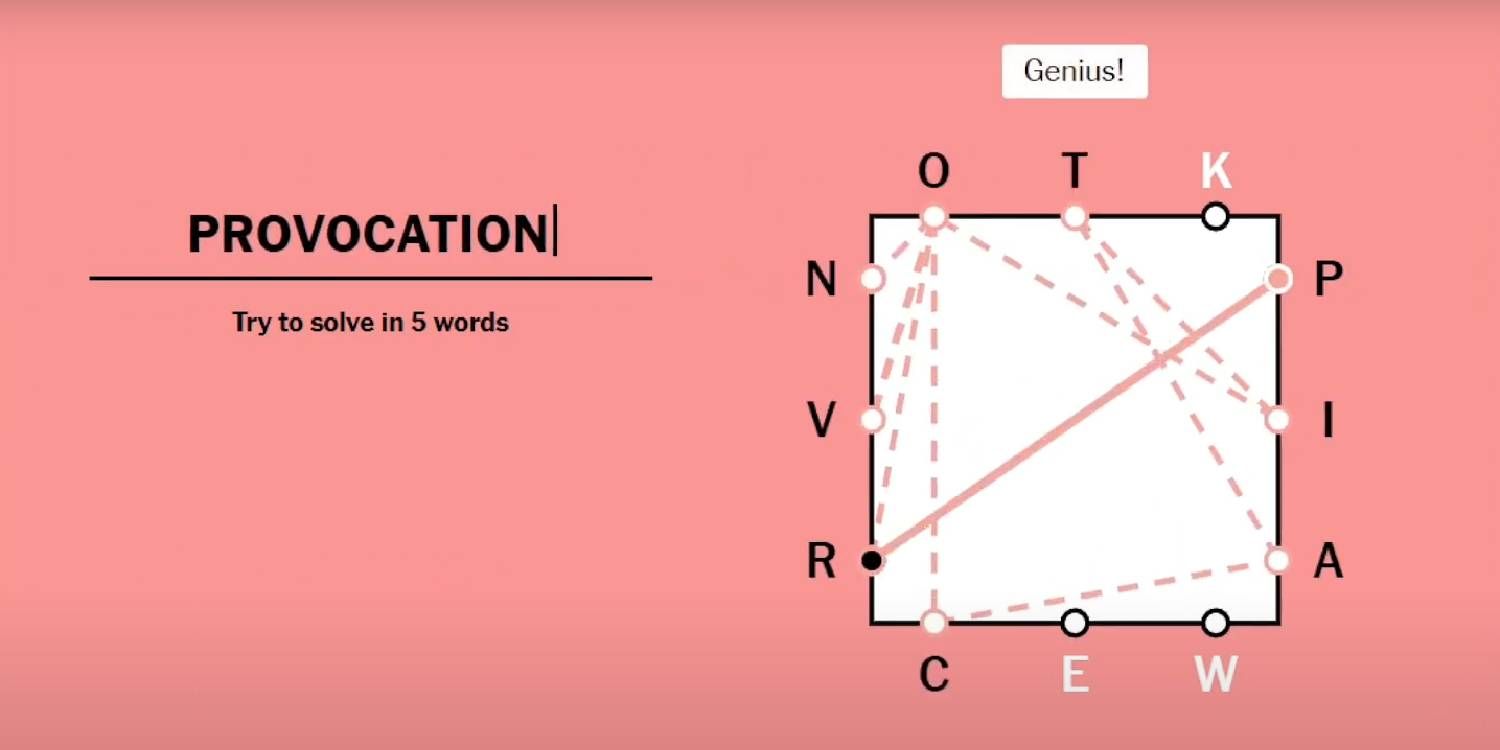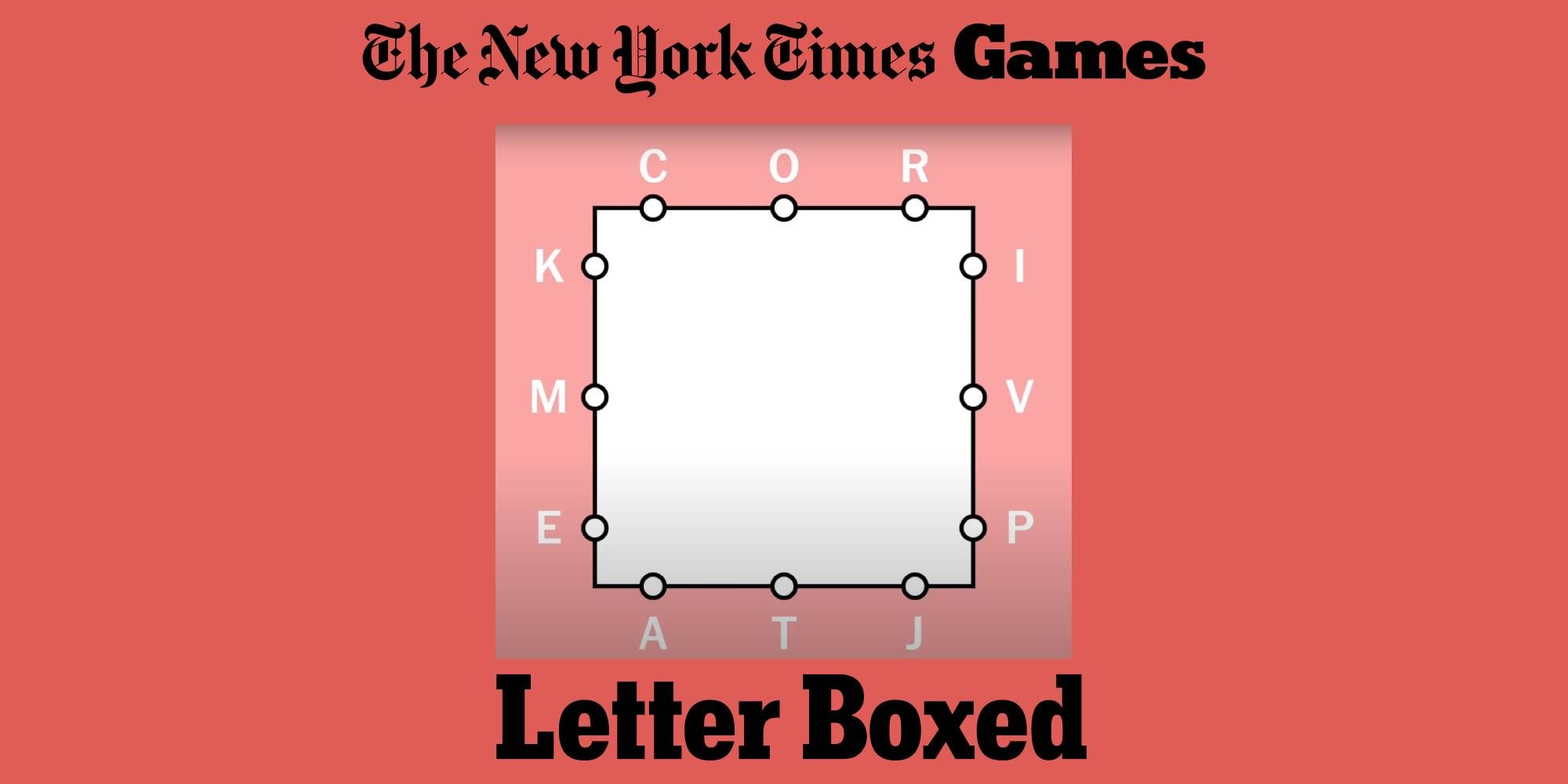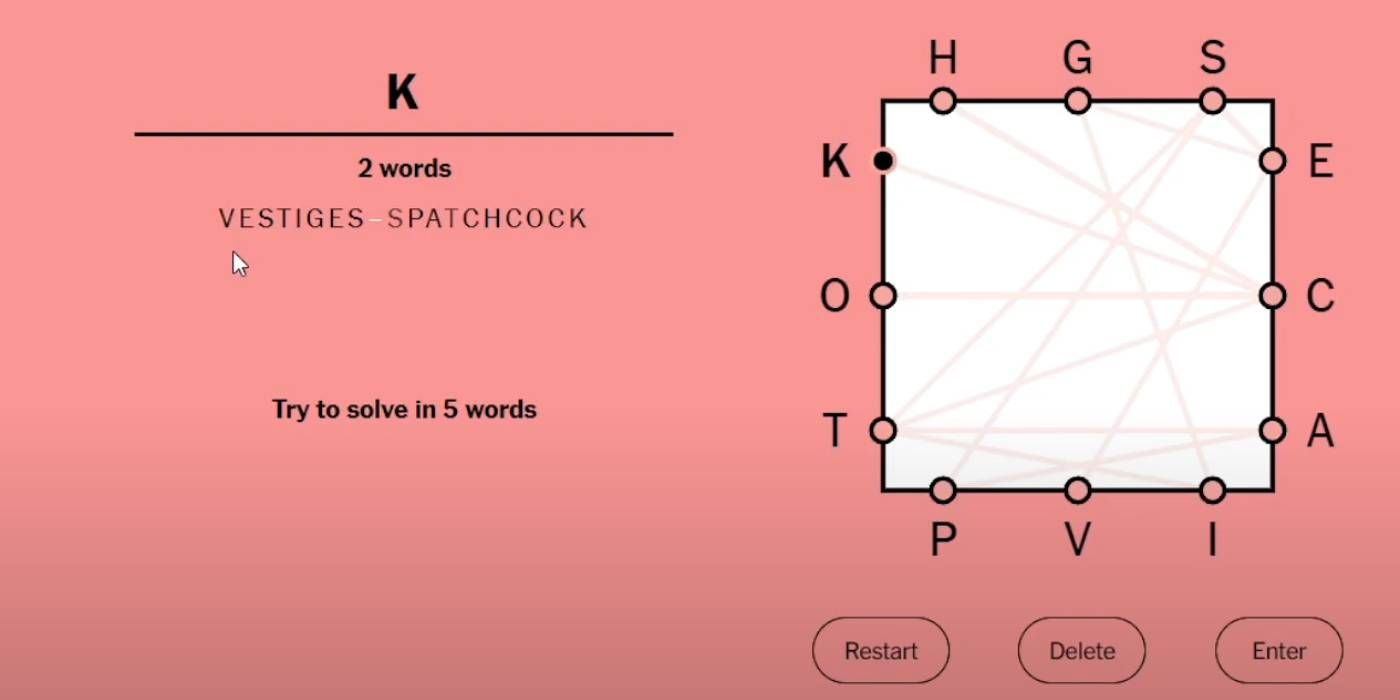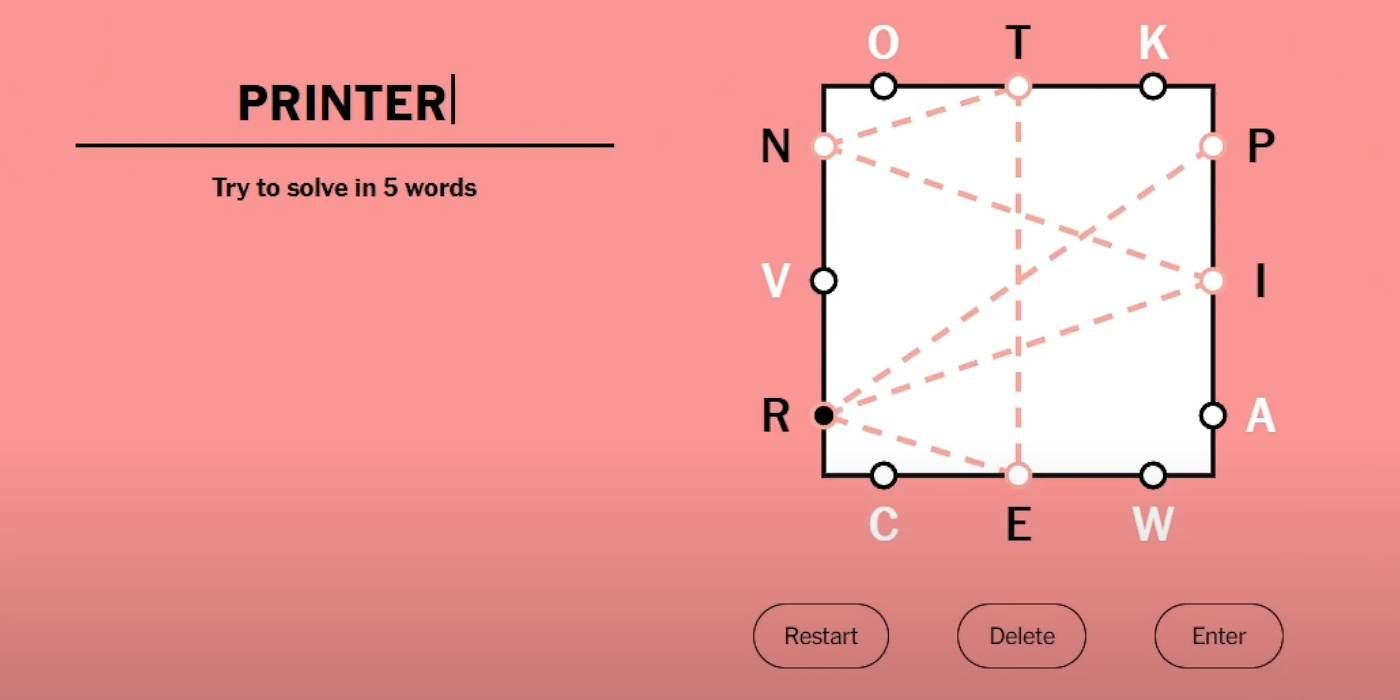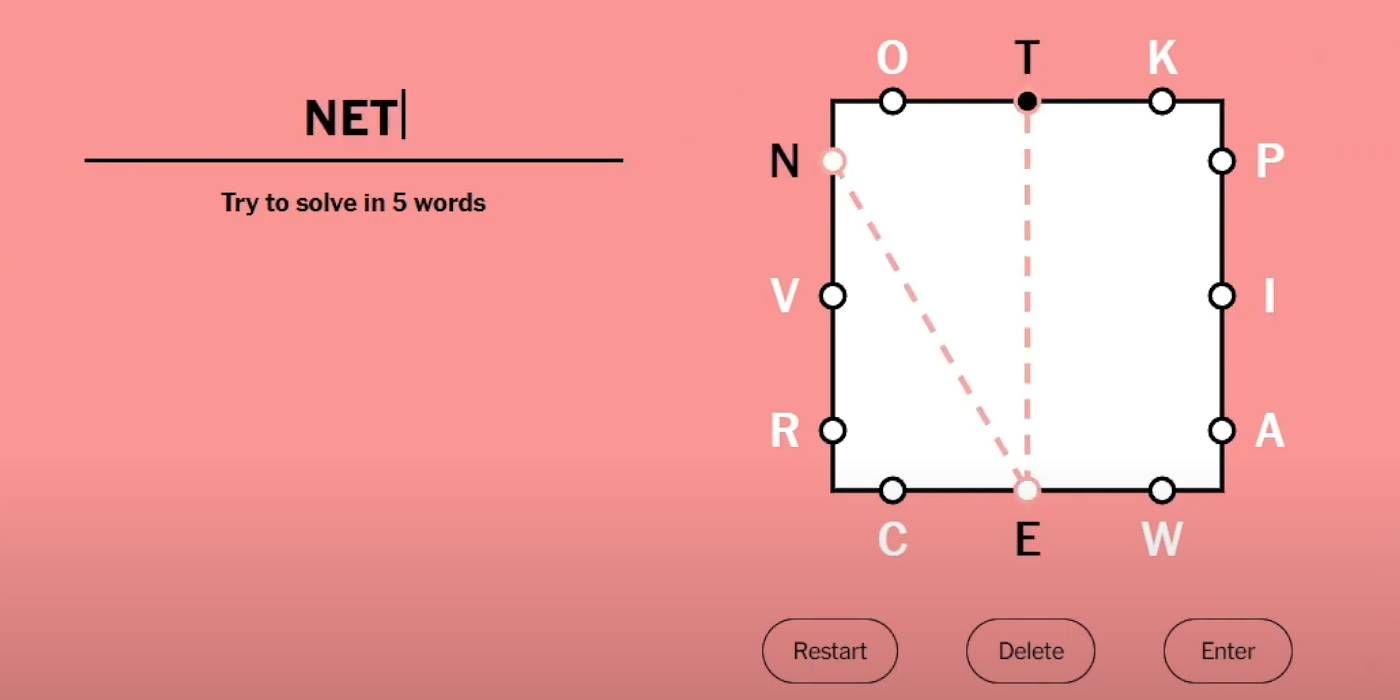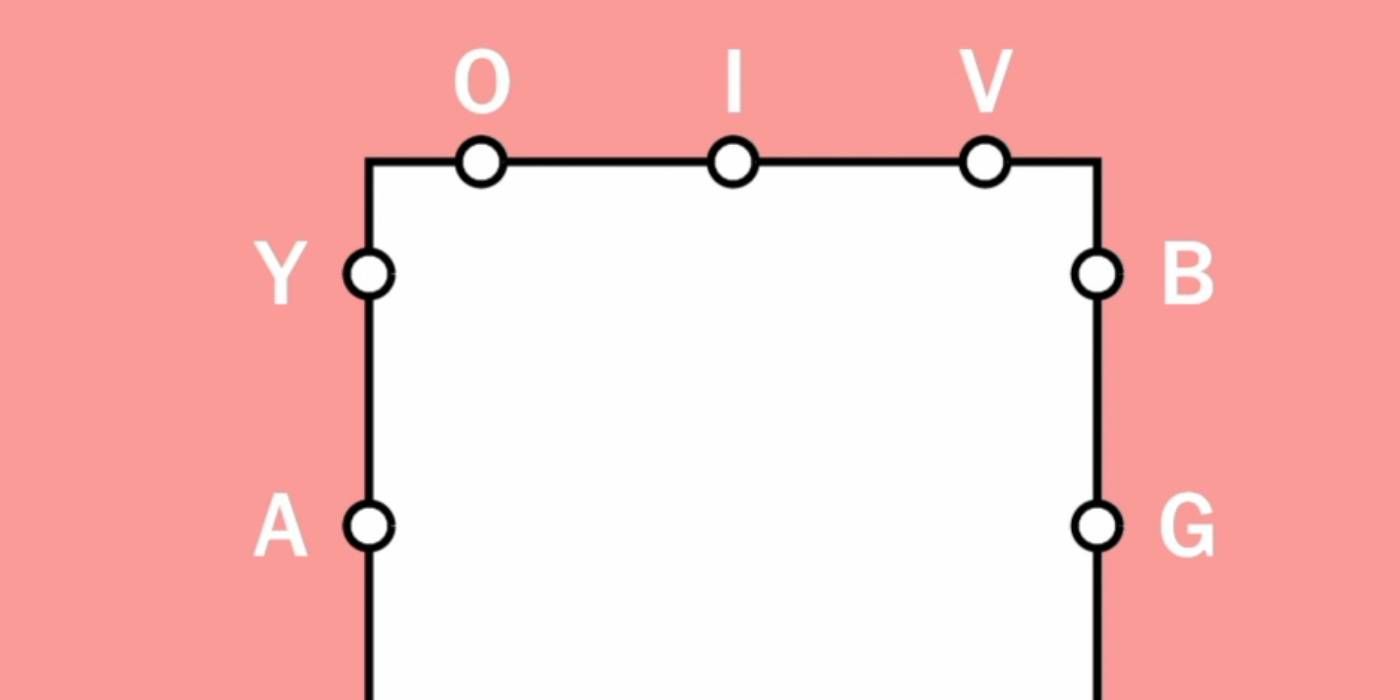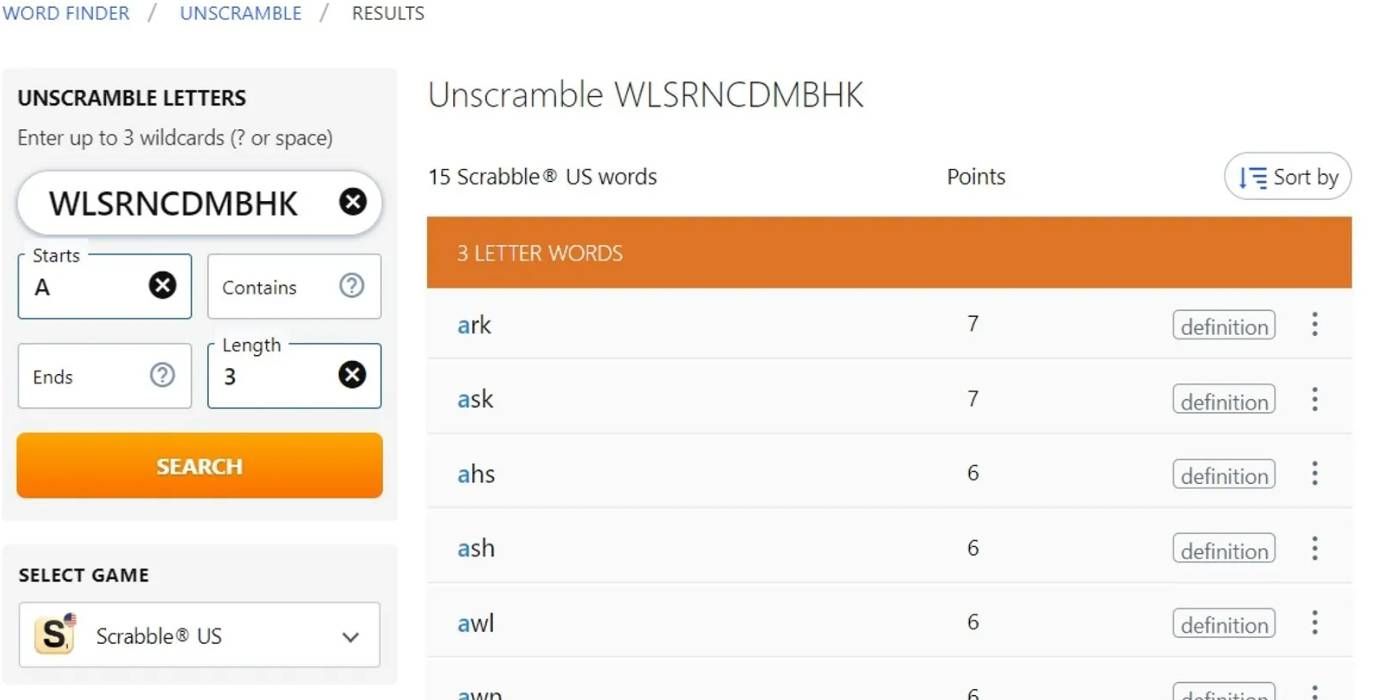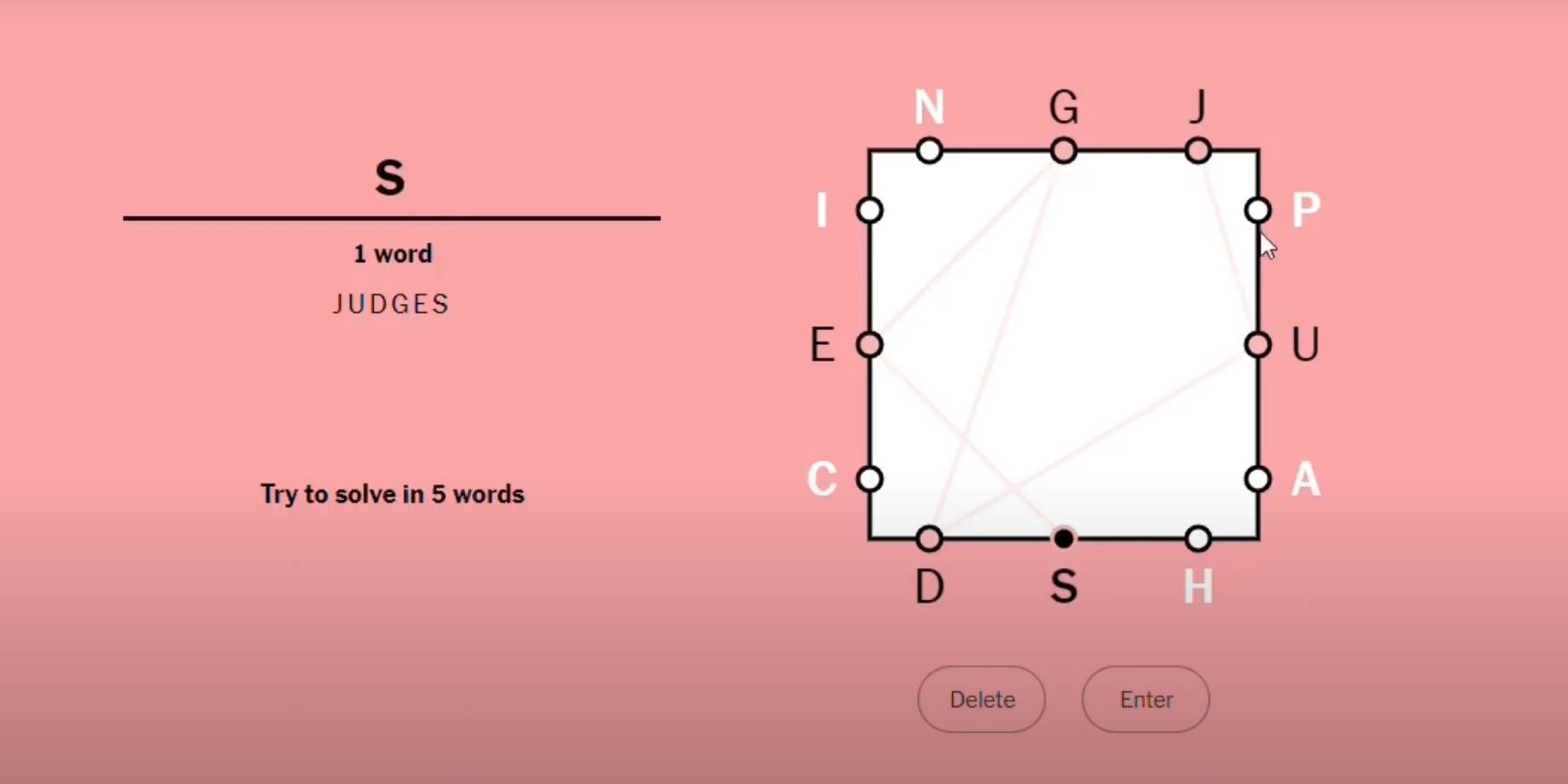The Letter Boxed game for the New York Times mobile app can be solved quickly when you use several strategies to find important connections between letters. This game puts a grid in front of you, with various letters on every edge of the shape. This puzzle aims to trace different letters together to form words, then use the last letter to begin the next phrase you choose to create.
The best result you can have in a game of Letter Boxed is to have a 2-Solve from the letters provided. This happens when you form only two words that use every letter in the box, unlike the vast words you need to form in games like Spelling Bee for the New York Times. The faster you can reach a 2-solve, the higher your score will be.
12 Understand The Game’s Rules
Know Your Limits
You need to know a few rules before starting a game of Letter Boxed if you want to start winning quickly. While you may already know you need to connect letters to spell words, you can only make words that are at least 3 letters long. You are allowed to reuse letters, but consecutive letters for a word cannot be from the side of the box since you need to draw a line to other edges of the puzzle’s shape.
The board for a game will always be presented with 3 letters on each side of the
Letter Boxed
square. You typically are asked to solve the game in 4–6 words depending on the difficulty of a day’s puzzle.
Proper nouns cannot be formed when you are trying to make new words, so don’t rely on names for locations or people. The only way to win a game of Letter Boxed is to use every letter on the board when you turn the last letter of a word formed into the first letter of the next phrase. Once you learn these restrictions, you can begin a game with a better grasp on what strategies you need to do to win fast.
11 Don’t Rely On Letters From The Same Side
Trust In Variety Instead Of Convenience
Another overlooked rule of Letter Boxed is that you cannot use more than one letter from the same side of the box. Every side of the puzzle box for this game has three letters each, usually a combination of different vowels and consonants. When you select one letter from one side, you can’t immediately continue the word by using another letter from the same side as the one you picked.
This can make forming words a bit tricky as they get longer and longer for a 2-solve or 3-solve. Consider limiting your perception to only three sides once you have picked a starting letter and so on once you start making a word with more. In a way, this makes forming a word a bit easier since you only need to worry about the letters available on three sides of the puzzle box instead of all four.
10 Recognize Common Words
Go With What’s Familiar
As you practice with different boards on a given day, take the time to recognize common words you can easily form from the letters presented. Patterns seen in New York Times games such as Letter Boxed‘s grid organization or the visual similarities in Tiles can help you find solutions. Planning out a word you can recognize right away will help you identify other connections from the remaining letters at a faster pace.
Try to be mindful of letter placements even when you see a word you recognize quickly from the letters available. Letter Boxed can sometimes fool you by making a word seem obvious, only for it to be impossible to make given the game’s existing rules. As you can see in the above video by YouTube creator KHG playing a sample game, you have a chance to delete your choices if your planned word cannot be made.
9 Implement Rare Letters Early
Think Outside The Box
Some vowels and consonants seen in a Letter Boxed board are easy to fit together, but some letters may leave you scratching your head as you think about where they fit. For example, you might run into a “Z” or “K” with no clear connections with the other 11 letters on the board. With 12 total letters given in 4 rows on each side of the puzzle square, there’s a high chance you get at least one or two odd choices.
Similar to the complex words used in the Mini crossword New York Times game, you should try to form the hardest words first. The sooner you get the weird letters out of the way, the faster it’ll take to solve the rest of the puzzle using the more common letters remaining. Those looking for a 2-solve should always try to exhaust the unorthodox letters first since the words made out of them will always be harder to create.
8 Use Reliable Prefixes And Suffixes
Form The End or Beginning First
When you’re struggling to find the right word, remember that most words in the English language have common prefixes and suffixes to start or end phrases. “-ed” and “-ing” are great suffixes to implement, while “ex-“ or “re-“ are often used as a word begins. Breaking down existing compound words into their basic elements will give you the building blocks necessary to form complex phrases quickly.
Prefixes and suffixes sometimes come up as attachments to words you could already use to solve a Letter Boxed game. Take a bit more time to check and see whether a word you’ve made could have an extra couple of letters added to its beginning or end with the options available. Keep in mind that the more letters you use in one word, the less you’ll need to use for future ideas to finish the game.
7 Plan One Step Ahead
Have Your Next Word Prepared
One advanced strategy you can use in a game of Letter Boxed is to have your next move planned as you form a word. As you make certain letters unavailable, think about which ones you are going to use next. The letters you leave out of a word are directly responsible for the upcoming phrase you make, so you have to make sure you are still leaving yourself with options.
This process will involuntarily limit your use of important letters, like the universal “E” or “A” seen in a majority of words in the English language. By giving yourself this restriction, you will create more opportunities for multiple words to set each other up in advance. Those who don’t do this may end up using all their important letters on the first word they make, preventing themselves from forming another one easily.
6 Don’t Be Afraid To Make More Words
A 3-Solve is Still Very Good
Don’t spend too much of your time aiming for a 2-solve if you aren’t confident that you can match the letters together to form only two words. A 3-Solve or 4-Solve is still very impressive and will cause you to score big points at the end of a Letter Boxed game. According to a video by YouTube creator Ham Freeze, it sometimes takes a bit of luck to recognize the words you need to get a 2-Solve in the first place.
If you are unsatisfied with a pattern you are making between letters for a word, you can always press the
“Restart”
button at the bottom of the puzzle to reset the board back to what it was without losing points.
Speed is also a factor you have to consider when playing this game since you get the highest number of points from solving the game board quickly. Anyone who takes too much time aiming for a 2-solve may lose out on more points that could’ve been gained from a faster 3 or 4-solve. While a fast 2-Solve is the best achievement you can get, it’s only worth getting when you have the means to do so in Letter Boxed.
5 Come Back To Difficult Letters
Force Uncommon Letters to Work For You
Once again, speed should be your focus when finding words to put together, so certain letters are best avoided if they give you too much trouble. While you do want to implement the unorthodox letters as soon as possible, there’s no telling how long it could take to make a word from one. When you aren’t 100% sure what a letter can create, move on to another one in the same section of the puzzle shape for new ideas.
Remember to keep a mental note of which words were the most difficult for you to use as you move on to others. A subconscious note on the hardest letters in the puzzle could cause ideas to come into your mind as you experiment with other elements of the Letter Boxed board. Like all the words used in Wordle, sometimes the most obvious phrases aren’t noticeable at the start until you’ve had some time to think.
4 Change Your Answers
Go Back And Try Again
Sometimes, you’ll enter a word or two easily, only to realize that the remaining letters have no chance to form any other words you may need. This is especially true if you use your important vowels early without considering what other letters will be left when you do. For example, spelling a word with “I” and “E” used up and leaving a “K” may be setting you up for an immediate failure.
Once you recognize this mistake, don’t be afraid to press the “Delete” prompt to go back a word or two in Letter Boxed. This won’t affect your score, so you still have a chance to get a 2-score or 3-score if you play your cards right. Be careful not to play the game too fast, as this may lead you to press “Delete” far more often and lead to some frustration later on.
It can be hard to admit a mistake, especially when you were able to form a brilliant first word that uses a lot of letters in the puzzle. However, it is better to re-evaluate your position than to stubbornly try to form words out of nothing. Experiment with different words instead of just sticking to your first guesses to open your eyes to other possible solutions within the puzzle.
3 Check Answers From Yesterday
See What Old Patterns Looked Like
Like many of the other New York Times mobile games, you can check what past answers were included in previous editions of Letter Boxed. This allows you to see which words were used in 2-Solve solutions, as well as other phrases hidden within the puzzle board. The “official” answers may help you recognize exactly what the game is looking for from your words and what patterns usually work the best.
Watching others solve different puzzles from what you’re currently working on might provide some unique insight as well. The above video by YouTube creator Scott Stro-solves displays how one person approaches a Letter Boxed puzzle and what words they formed from it. The errors or good ideas another person uses could show you something to try the next time you aim for a quick 2-Solve for the game.
2 Look Up Words You Don’t Know
Consult A Thesaurus For More Inspiration
The English language contains far too many words for any one person to know completely. Therefore, it may be wise to have a Thesaurus or software like WordFinder open somewhere to help you create words in Letter Boxed. By simply flipping through a dictionary, you may discover words you never knew before that could be applied to the puzzle you’re currently struggling with.
Always try to use a search engine with a variety of filters to help find words based on your exact needs for a puzzle. Anything less will only serve to make you more confused about possible words you can create.
Some websites have advanced search features that allow you to search for words based on specific settings. For example, you can look for words that end in a certain letter based on what is available in your Letter Boxed puzzle. If you have a puzzle with a “K” or similar letter you don’t know where to put, feel free to use a word search engine to help you complete a word with that letter.
1 Hold On To Any “S” You Find
Keep the Most Important Letter Saved
One of the most important letters you can get in a game is an “S” since it can easily change any word you make into a plural version of itself. The importance of this letter is that it should be used last to complete the puzzle and finish the last word you make in Letter Boxed. Having a guaranteed way to always use one letter in the puzzle allows you to think about the other 11 letters before considering how to implement the “S.”
Another strategy involving an “S” letter is to use it as the end of the first word in the game, then use it as an easy way to start the second word needed for a 2-Solve. A lot of different words start with “S,” so you have a variety of options to form your next phrase easily. The best strategies for solving Letter Boxed games for the New York Times quickly might seem simple, but only when you plan like this.
Source: KHG/YouTube, Ham Freeze/YouTube, Scott Stro-solves/YouTube



